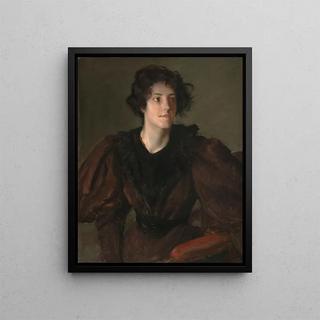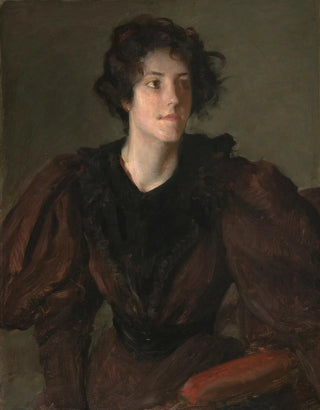Art print | Study of a young woman - William Merritt Chase


View from behind

Frame (optional)
William Merritt Chase's "Study of a Young Woman" art print stands as a true ode to feminine beauty and the delicacy of the moment. This painting, created at the end of the 19th century, captures the essence of an era when Impressionism was beginning to establish itself in the art world. The artist, through this study, manages to transcend mere representation to invite the viewer to feel a profound emotion. The intimate atmosphere and contemplative pose of the young woman, both serene and full of grace, immerse us in a suspended moment where time seems to stand still. Chase, a master of color and light, succeeds in creating an ambiance that still resonates today, making this work an essential part of the artistic heritage.
Style and uniqueness of the work
William Merritt Chase's style is distinguished by his ability to play with light and shadows, creating striking depth. In "Study of a Young Woman," the delicate nuances of the model's skin contrast with the rich, warm tones of the background. This interaction between the subject and its environment is characteristic of Impressionism, but Chase adds a personal touch, a finesse unique to him. The details of the young woman's clothing, carefully rendered, demonstrate meticulous attention to ornamentation, while maintaining a lightness that allows the composition to breathe. The figure's posture, slightly turned, suggests introspection—a invitation to share a moment of intimacy with the observer. Chase thus manages to establish a silent dialogue between the canvas and the audience, making the art print even more captivating.
The artist and his influence
William Merritt Chase, an emblematic figure of American art, knew how to leave his mark on his era through his innovative approach and commitment to Impressionism. Born in 1849, he was both a painter, teacher, and mentor to many artists of his time. His influence extends beyond his own creations; he played a key role in establishing American art on the international stage. Chase was also a pioneer in art education.

Matte finish

View from behind

Frame (optional)
William Merritt Chase's "Study of a Young Woman" art print stands as a true ode to feminine beauty and the delicacy of the moment. This painting, created at the end of the 19th century, captures the essence of an era when Impressionism was beginning to establish itself in the art world. The artist, through this study, manages to transcend mere representation to invite the viewer to feel a profound emotion. The intimate atmosphere and contemplative pose of the young woman, both serene and full of grace, immerse us in a suspended moment where time seems to stand still. Chase, a master of color and light, succeeds in creating an ambiance that still resonates today, making this work an essential part of the artistic heritage.
Style and uniqueness of the work
William Merritt Chase's style is distinguished by his ability to play with light and shadows, creating striking depth. In "Study of a Young Woman," the delicate nuances of the model's skin contrast with the rich, warm tones of the background. This interaction between the subject and its environment is characteristic of Impressionism, but Chase adds a personal touch, a finesse unique to him. The details of the young woman's clothing, carefully rendered, demonstrate meticulous attention to ornamentation, while maintaining a lightness that allows the composition to breathe. The figure's posture, slightly turned, suggests introspection—a invitation to share a moment of intimacy with the observer. Chase thus manages to establish a silent dialogue between the canvas and the audience, making the art print even more captivating.
The artist and his influence
William Merritt Chase, an emblematic figure of American art, knew how to leave his mark on his era through his innovative approach and commitment to Impressionism. Born in 1849, he was both a painter, teacher, and mentor to many artists of his time. His influence extends beyond his own creations; he played a key role in establishing American art on the international stage. Chase was also a pioneer in art education.






